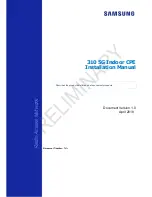
NOTE
Permanent emergency opening
A fire can damage the input cable or other parts. This would cause the
locking devices to close again even though there is a fire. Persons could be
locked up in the fire zone and rescue units could be prevented from enter-
ing.
Therefore, all locking devices stay in the emergency opening state (and
thus passable) until an explicit remote opening command closes the lock-
ing devices again.
If you define a response to an event, you must make additional
specifications.
1. Select the LockNodes that are to react.
2. Specify the protocol generation (G1, G1+G2, G2) as entered in the lock-
ing system settings.
3. Specify the locking system password.
A signal applied to the input is an input event and can also be switched by
the built-in relay, see
▼ Output
in
RouterNode has reacted to the input event and, for example, has
performed a broadcast, it can thus switch the relay as confirmation.
In the
▼ Delay [s]
drop-down list, you can set how long the RouterNode
should wait until the corresponding input responds to an event.
"0 s"
Standard entry: The input reacts immediately
to an event.
"8 s"
The input reacts to an event after 8 seconds
"16 s"
The input reacts to an event after 16 seconds.
"24 s"
The input reacts to an event after 24 seconds.
"32 s"
The input reacts to an event after 32 seconds.
"RingCast"
An event at the input triggers a RingCast (see
Forward triggering events to the LSM
You can use the checkbox Report events to management system to set
whether the signals (input events) at the respective input are to be
forwarded to LSM. In LSM, you can (additionally) use the event manager to
react to these events.
Not all events are forwarded (see table):
WaveNet
(Manual)
5. WaveNet Manager
80 / 210
















































